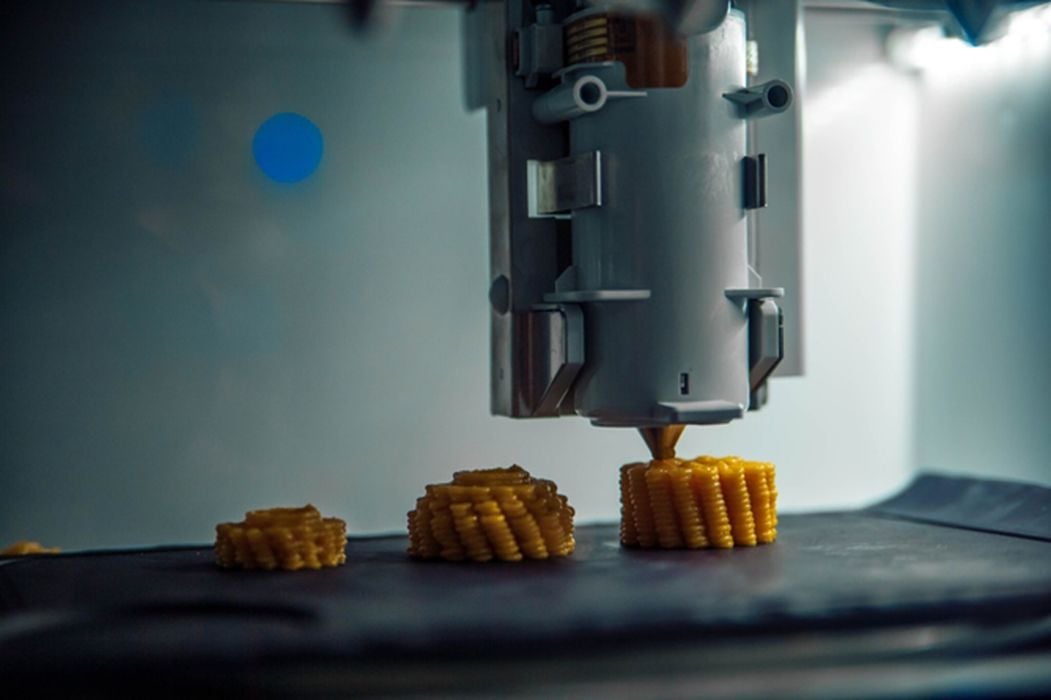
Charles R. Goulding and Preeti Sulibhavi explore how the groundbreaking trade deal between India and the EFTA nations is set to revolutionize multiple industries through the strategic implementation of 3D printing technology.
In an epic conclusion to sixteen years of trade talks, the European Free Trade Association (EFTA), comprised of Norway, Switzerland, Iceland and Liechtenstein, struck a free-trade agreement (FTA) with India. India is now the world’s fifth-largest economy.
According to India’s Prime Minister, Narendra Modi, “his landmark pact underlines our commitment to boosting economic progress and creating opportunities for our youth.” The free trade with the EFTA will be balanced with a broad range of investments.
India and the four EFTA nations now need to ratify the agreement before it can take effect, with Switzerland planning to do so by next year.
The quid pro quo for access to this agreement is a pledge to invest US$100 billion in India and create 1 million jobs over 15 years.
In the last two years, India has signed trade deals with Australia and the United Arab Emirates (UAE). This is the first such binding commitment in the history of foreign trade agreements.
The success of any Foreign Trade agreement is based on all parties understanding the resources and strengths of the other parties.
An Opportunity for 3D Printing…
During the 16 years of these talks, 3D printing has matured into an important business asset. There is a chance for 3D printing to become involved early on during the investment phase of this unprecedented agreement.
Accordingly, the 3D printing industry has the opportunity to greatly benefit from the new trade agreement. This technology offers numerous advantages, such as rapid prototyping, customization, and the ability to create complex geometries. In India, multiple companies have embraced 3D printing to streamline their manufacturing processes and explore new opportunities.

Elevator, Crane, and Equipment Industry
The elevator, crane, and equipment industry can benefit significantly from 3D printing technology. Some of the 3D printing business strengths and expertise of the parties to this agreement are as follows.
Here are three examples of how it can be utilized in this sector.
- Customized Spare Parts and Components: Traditional manufacturing methods often require expensive tooling and molds, making it challenging to produce small batches of customized parts. With 3D printing, companies can produce spare parts and components on-demand, reducing lead times and inventory costs. For instance, Tata BlueScope Steel, a leading steel company in India, has explored the use of 3D printing for producing customized components for their machinery and equipment.
- Functional Prototyping: 3D printing allows for rapid prototyping of complex designs, enabling companies to test and refine their products before committing to full-scale production. This can accelerate the product development cycle and reduce costs associated with traditional prototyping methods. Everest Engineering Equipment Co. Pvt. Ltd., a manufacturer of material handling equipment based in Pune, has leveraged 3D printing for prototyping and testing new designs for their cranes and lifting equipment.
- Lightweight and Optimized Components: Additive manufacturing can create lightweight and optimized components by using advanced materials and geometries that are difficult or impossible to produce with traditional manufacturing methods. This can lead to improved performance and energy efficiency in equipment and machinery. For instance, Bharat Earth Movers Limited (BEML), a leading manufacturer of construction and mining equipment, has explored the use of 3D printing for producing lightweight and optimized components for their products.
We have previously written construction and earth-moving equipment articles covering Caterpillar, John Deere and CNH Industrial.
Food Industry
The food industry has also found innovative applications for 3D printing technology.
- Customized Food Products: 3D printing allows for the creation of intricate and customized food products, catering to specific dietary needs or artistic designs. Companies like Edible 3D Print Cafe in Hyderabad have been experimenting with 3D printing to create unique and visually appealing food items, such as chocolate sculptures and personalized pastries.
- Food Texture and Flavor Manipulation: 3D printing can be used to manipulate the texture and flavor of food products by precisely controlling the deposition of ingredients and additives. This can lead to the development of new food experiences and product offerings. Start-ups like Chef 3D in Bangalore have been exploring the use of 3D printing for creating novel food textures and flavors.
- Sustainable Food Production: 3D printing can contribute to sustainable food production by enabling the creation of plant-based meat alternatives and reducing food waste. Companies like Plantmade in Mumbai have been using 3D printing to produce plant-based meat substitutes with customizable textures and flavors, addressing the growing demand for sustainable and environmentally friendly food options.
Textile Industry
The textile industry has also embraced 3D printing technology, offering new possibilities in design and production. 3D printing allows for the creation of intricate and customized textile designs that would be difficult or impossible to achieve with traditional weaving or knitting techniques. Companies like Kalki Fashion in Mumbai have been exploring the use of 3D printing for creating unique and complex textile patterns and designs. We have also covered the use of jute in various products as well and how 3D printing can be utilized to improve that effort.
Like other industries, 3D printing enables rapid prototyping of textile products, allowing designers and manufacturers to test and refine their designs before committing to full-scale production. This can accelerate the product development cycle and reduce costs associated with traditional prototyping methods. Luxury brands have utilizing 3D printing for prototyping and testing new textile designs.
Sustainable and eco-friendly textile production is another avenue for 3D printing utilization. 3D printing can contribute to sustainable and eco-friendly textile production by enabling the use of recycled or biodegradable materials, reducing waste, and minimizing the need for harmful dyes and chemicals. Companies like Phi Apparel in Bangalore have been exploring the use of 3D printing for producing sustainable and eco-friendly textiles.
EFTA Countries and 3D Printing
EFTA countries have extensive 3D printing expertise as well.
Iceland
Iceland has a vast seafood industry and we have covered how 3D printing can be used to create plant-based meat alternatives. 3D printing can provide a way to expand this industry in India efficiently from the onset.
Just last year we covered how Curio, an Icelandic company, was making history in the fish equipment industry by utilizing seven 3D printers, from Desktop Metal, to fabricate stainless steel parts for his fish-processing equipment, reducing production time and cost in the process.
Switzerland
Researchers in Switzerland 3D-printed an intact robotic hand with bones, tendons and ligaments that allow for more flexibility just last year. Bringing this intricate medtech technology to investments in India could vastly improve health outcomes, globally.
Norway
Norway is a country with many industries utilizing 3D printing technology today. Norway has been using 3D printing for defense, shipping, oil and gas. Norway-based Equinor is one of the world’s leading producers of oil and natural gas. Equinor also has an offshore wind turbine business segment. A March 14, 2022 Barron’s article characterized Equinor as one of the best-kept secrets in the oil and gas industry.
And, the Fieldmade team first made a mobile microfactory linked to a digital ecosystem for onsite 3D printing equipment parts just in time for the Norwegian Army. This technology is now being made available to the energy sector inventory supply chain.
The Research & Development Tax Credit
3D printing can help boost a company’s R&D Tax Credits. Wages for technical employees creating, testing and revising 3D printed prototypes can be included as a percentage of eligible time spent for the R&D Tax Credit. Similarly, when used as a method of improving a process, time spent integrating 3D printing hardware and software counts as an eligible activity. Lastly, when used for modeling and preproduction, the costs of filaments consumed during the development process may also be recovered.
Whether it is used for creating and testing prototypes or for final production, 3D printing is a great indicator that R&D Credit eligible activities are taking place. Companies implementing this technology at any point should consider taking advantage of R&D Tax Credits
The now permanent Research & Development Tax Credit (R&D) Tax Credit is available for companies developing new or improved products, processes and/or software.
Conclusion
As 3D printing technology continues to evolve and become more accessible, it is expected to have a significant impact on various industries in India, including the elevator, crane, and equipment industries, as well as the food and textile industries. The countries that comprise the EFTA can embrace this technology and can benefit from increased efficiency, customization, and sustainability while exploring new avenues for innovation and growth in India.
